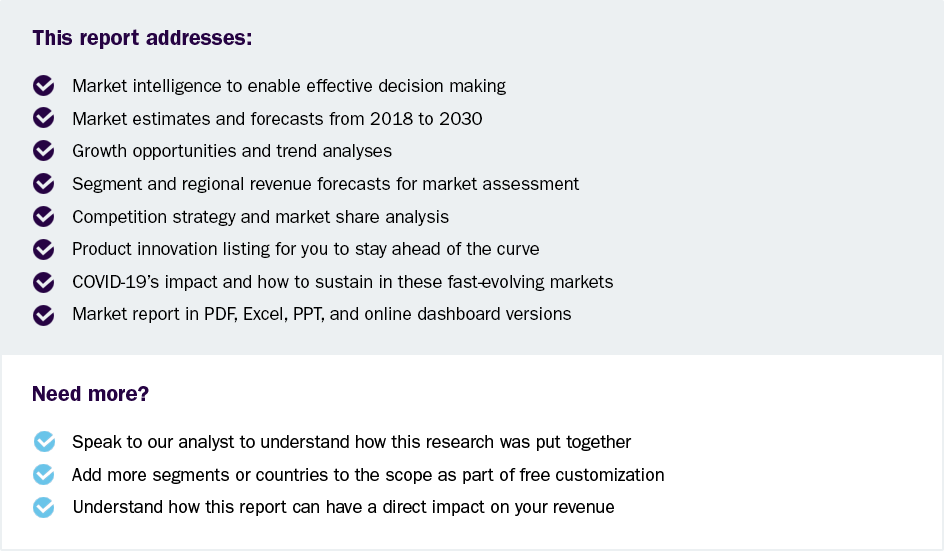Long Read Sequencing Market To Reach $1.53 Billion By 2030
Long Read Sequencing Market Growth & Trends
The global long read sequencing market size is estimated to reach USD 1.53 billion by 2030, registering to grow at a CAGR of 20.12% from 2025 to 2030 according to a new report by Grand View Research, Inc. Since the sequencing method has shown to be of utmost importance in modifying pharmaceuticals, there is also a cumulative market value for the expanding knowledge of long read sequencing. An increase in the adoption of these technologies for the analysis of structural variants is expected to drive the market throughout the forecast period.
Currently, a lot of research is being conducted which is forecast to give manufacturers a slight advantage as they develop new and advanced elongated read sequencing, as well as to open up a lot of other prospects in the long read sequencing market. Furthermore, owing to the ongoing COVID-19 pandemic, key players are working with public health laboratories and researchers around the world to support the current COVID-19 pandemic by rapid sequencing of the novel coronavirus SARS-CoV-2.
Companies are also involved in the development of workflows to characterize a wide range of pathogens in a sample. Recently, Oxford Nanopore Technologies developed LamPORE-a scalable, low-cost, rapid assay for the detection of SARS-CoV-2. A rise in the prevalence of genetic disorders combined with an increase in top manufacturers' R&D expenditures in long-read sequencing technology is projected to greatly advance the industry. The long read technique is mostly used to study genetic disorders for which disease loci are either well-known or strongly suspected.
In addition, the limitations of clinical disease research based on next-generation sequencing could be partially overcome by these technologies. Since longer reads from a single DNA molecule are used, long-read sequencing methods have a distinct advantage over other technology. Another driver of market expansion is the rising acceptance of contemporary methods for medical diagnosis. The portability and real-time speed of LRS technology are further factors contributing to its rising demand.
It is additionally utilized to create a precise reference map of the chromosome centromere. In addition, numerous biotech firms are creating cutting-edge technologies that combine a fresh approach to library preparation with tools for genomic analysis. Accordingly, a number of researches show that LRS technology is quite useful for identifying novel harmful mutations in human disorders with unidentified genetic origins. This offers a wealth of potential for researchers to use whole-genome sequencing (WGS) technology to develop medical genetics.
 Request a free sample copy or view report summary: Long Read Sequencing Market Report
Request a free sample copy or view report summary: Long Read Sequencing Market Report
Long Read Sequencing Market Report Highlights
-
In 2024, the consumables segment held the largest market share of 62.17%.
-
The nanopore sequencing segment dominated the market in 2024 with a share of 56.47%.
-
The sequencing segment accounted for the largest revenue share of 62.24% in 2024. This trend is anticipated to continue throughout the projection period.
-
The whole genome sequencing segment dominated the long read sequencing market in 2024 with a share of 29.97%.
-
In 2024, the academic & research institutes segment captured the largest market share of 48.83%.
Long Read Sequencing Market Segmentation
Grand View Research has segmented the global long read sequencing market based on product, technology, workflow, application, end-use and region:
Long Read Sequencing Product Outlook (Revenue, USD Million, 2018 - 2030)
-
Instruments
-
Consumables
-
Services
Long Read Sequencing Technology Outlook (Revenue, USD Million, 2018 - 2030)
-
Single Molecule Real Time Sequencing
-
Nanopore Sequencing
-
Others
Long Read Sequencing Workflow Outlook (Revenue, USD Million, 2018 - 2030)
-
Pre-sequencing
-
Sequencing
-
Data Analysis
Long Read Sequencing Application Outlook (Revenue, USD Million, 2018 - 2030)
-
Whole Genome Sequencing
-
Targeted Sequencing
-
Metagenomics
-
RNA Sequencing
-
Epigenetics
-
Others
Long Read Sequencing End-use Outlook (Revenue, USD Million, 2018 - 2030)
-
Academic & Research Institutes
-
Hospitals & Clinics
-
Pharmaceutical & Biotechnology Companies
-
Others
Long Read Sequencing Regional Scope Outlook (Revenue, USD Million, 2018 - 2030)
-
North America
-
U.S.
-
Canada
-
Mexico
-
-
Europe
-
UK
-
Germany
-
France
-
Italy
-
Spain
-
Denmark
-
Sweden
-
Norway
-
-
Asia Pacific
-
Japan
-
China
-
India
-
Australia
-
Thailand
-
South Korea
-
-
Latin America
-
Brazil
-
Argentina
-
-
Middle East & Africa
-
South Africa
-
Saudi Arabia
-
UAE
-
Kuwait
-
List of Key Players in Long Read Sequencing Market
-
Pacific Biosciences of California, Inc.
-
Oxford Nanopore Technologies Limited
-
Quantapore, Inc.
-
Element Biosciences
-
BGI
-
Eurofins Genomics
-
F. Hoffmann-La Roche Ltd.
-
MicrobesNG
-
Takara Bio
-
New England Biolabs
-
Pacific Biosciences of California, Inc.
-
Oxford Nanopore Technologies Limited
-
Quantapore, Inc.
-
Element Biosciences
-
BGI
-
Eurofins Genomics
-
F. Hoffmann-La Roche Ltd.
-
MicrobesNG
-
Takara Bio
-
New England Biolabs

